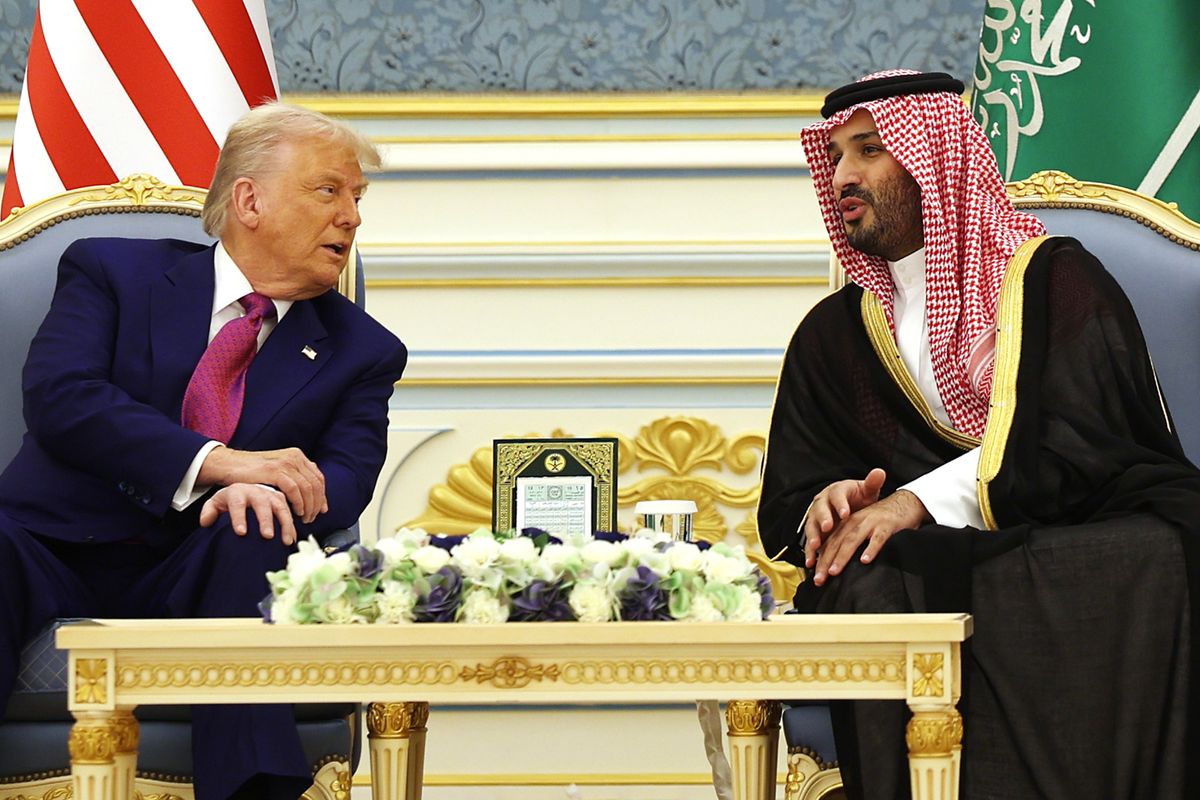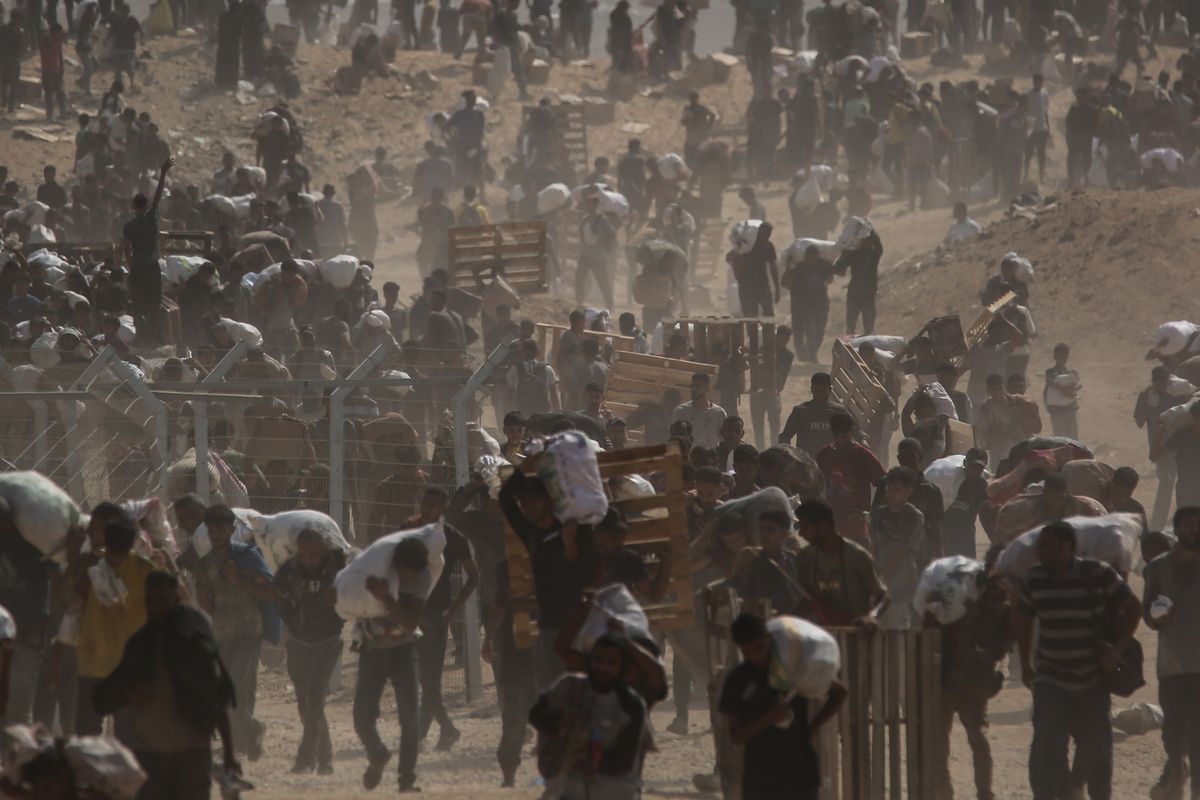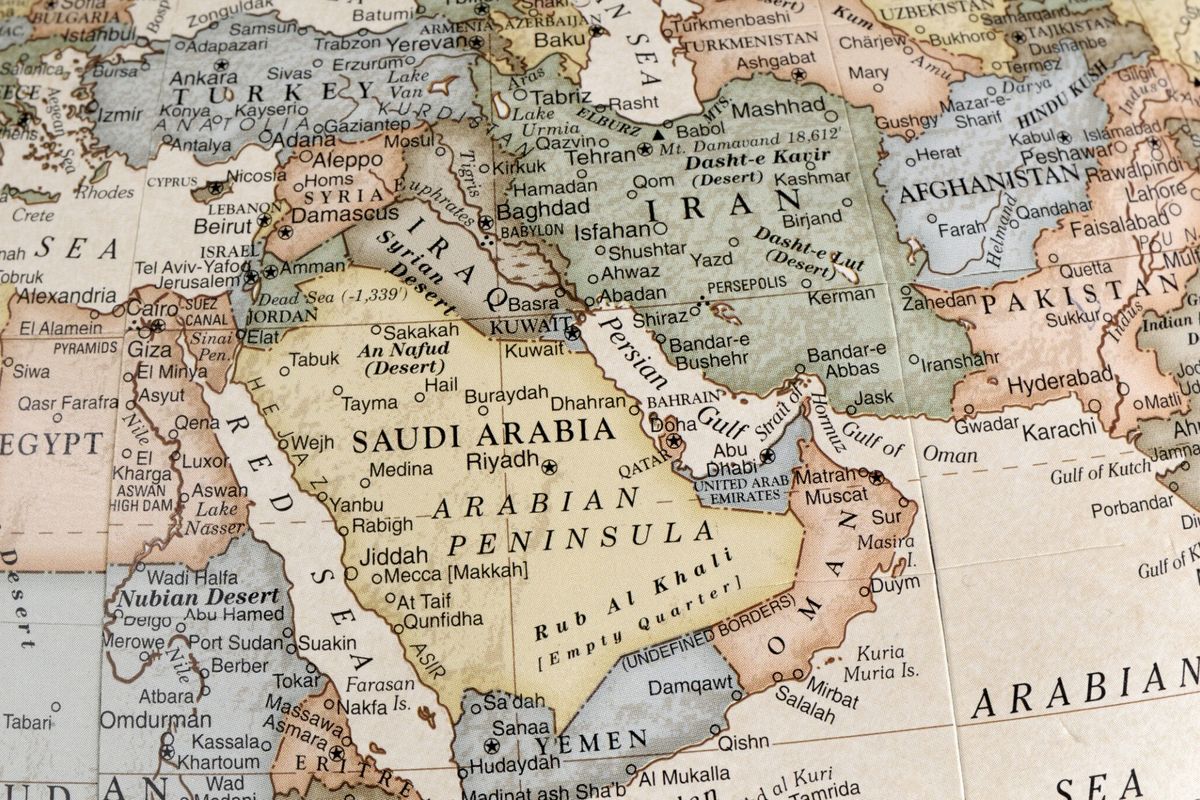In the second part of a Cipher Brief two-part series on the significant implications of the battle for Hodeida, Cipher Brief Expert Norm Roule, who is also the ODNI’s former National Intelligence Manager for Iran, shares his secrets for understanding how today’s actions are influenced by the past and how that understanding may shape the future.
The Battle of Hodeida is underway in force. Coalition forces now control a strip of territory along the Red Sea coast and most of Hodeida airport. These are important successes, but the combination of Coalition unwillingness to risk civilian casualties, the dense urban fighting environment, and the importance of the port city to the Houthis, means that expulsion of Houthi forces will take time, although control of the airport and port itself will likely be achieved soon. It remains an open question whether the operation will achieve the Coalition’s ultimate goal of forcing the Houthis to return to the negotiating table with the legitimate Yemeni government.
Norman T. Roule, Former National Intelligence Manager for Iran, ODNI
'Already it is clear that this battle may well be the most significant in the Yemen conflict since the fall of Sana. The political and military consequences of failure, or even a protracted campaign, for either side will be significant. A long battle risks exacerbating an already catastrophic humanitarian situation. During a time of unprecedented humanitarian crises, Yemen continues to be the world’s greatest tragedy. Around 18 million Yemenis (i.e., two thirds of its population) are short of food and of this number, eight million are at risk of starvation. An additional million Yemenis suffer from cholera.'
Hodeida’s Importance to the Houthis
Hodeida’s importance to the Houthis is difficult to overstate. Recent months have seen a series of Houthi defeats and the port is now the last major Houthi-controlled city outside Yemen’s mountainous interior. Control of the port provides Houthi coffers with at least $30 million in monthly revenues as well as a port by which it can import Iranian weapons. The Houthis occupy a second, deep water port, Al-Saleef, approximately 50 kilometers north of Hodeida, but its smaller size and limited number of shipping berths makes it a poor substitute for Hodeida. The loss of Hodeida will severely impact the Houthi ability to pay fighters, damage Houthi prestige among Yemen’s capricious tribes, and possibly reduce the number of Houthi missile launches against Saudi Arabia. Although it is unlikely even the Houthis expect to withstand the Coalition militarily, they likely see this battle as an opportunity to further stain their opponents in the eyes of an international community which seems unsympathetic to Coalition policies and more concerned about humanitarian issues.
Drivers of Coalition Action
Throughout 2018, a series of compelling drivers developed which made this operation an imperative for Riyadh and Abu Dhabi.
- First, the Emirati and Saudi claim that they have refrained from operations to liberate the port for three years at the request of the West, to allow time for a political settlement. During this time, the Houthis have shown little interest in power sharing but have exploited the port to feed their war machine and extend the conflict.
- Second, the humanitarian crisis will likely worsen in the coming months. The Emiratis and Saudis complain that much of this disaster is the responsibility of the Houthis and the world seems to ignore that they have contributed around $14 billion to relieve Yemeni suffering. Transfer of the port to United Nations control, they claim, is critical. Hodeida provides an estimated 70 per cent of the country’s humanitarian aid and almost half of the country’s food imports for this year. Finally, the Coalition points to the Houthi refusal in May of such a proposal as evidence that the Houthis will not cooperate on humanitarian issues.
- Third, Yemen government control of the port is required to refurbish neglected equipment and facilities as well as to restore wages to local workers. This step will both improve port operations and encourage the return of businessmen and shippers who have fled Houthi control.
- Fourth, expulsion of the Houthis from the Red Sea Coast will end Houthi attacks against shipping as well as choke supply lines through which the Houthis have imported the missiles which now strike Saudi territory.
- Finally, Emirati and Yemeni successes against Houthi and al-Qaeda strongholds in Makallah, Mokha, Aden, and Taiz suggest the Coalition has the experience and momentum for such an operation, even without Western support. In May, UAE forces carried out a successful amphibious assault on Fazah, approximately 80 kilometers south of Hodeida.
Coalition Goals
The Hodeida campaign will require attention to several competing priority goals. First and foremost, the Coalition’s operations cannot worsen Yemen’s humanitarian disaster. Instead, the UAE and Saudi Arabia must sustain, and if possible expand, the flow of humanitarian shipments through the port. A tough requirement to achieve while in battle against a foe which has little concern for such issues. Second, Coalition operations must be conducted in a manner which limit civilian casualties. Houthi willingness to launch attacks from civilian areas will therefore constrain the use of Coalition fire power. Finally, in that no one believes the capture of Hodeida will end the conflict, the Coalition must continue to energize the political process between Yemen’s warring parties.
The Operation to Date
The operation to date appears to have been conducted efficiently and according to plan. Coalition forces have achieved control of an important strip along the Red Sea coast south of the city and have prevented Houthi reinforcements from entering the area. The Coalition quickly achieved control over much of the airport although the mining of the port has delayed amphibious operations. The Houthis have lost dozens of killed and wounded but have taken up sniper positions from civilian areas. Houthi probes and efforts to reinforce the city have been repelled. Air strikes have been limited and it appears that care is being taken to avoid civilian losses. The Hodeida-Sana road remains open both to distribute aid – which remarkably is still being delivered to the port – and to offer the Houthis an avenue to escape the city.
The near-term prospects for this campaign will depend on the tenacity of Houthi forces and the extent to which they use civilians as shields. The Coalition is likely to continue to try to shape the battlefield to encourage the Houthis to abandon the town.
Likely Houthi Response to the Attack
Hodeida will not fall easily. The financial and symbolic importance of the port has likely caused the Houthis to assign many of their most loyal and experienced fighters to the city. Houthi fighters likely number at least a thousand, but possibly several times this number. This force will be augmented by less reliable locally-impressed tribal fighters and child soldiers who are likely to abandon their posts under pressure.
The Houthi record in defending urban areas has been mixed. Much depends on terrain and the experience of their adversaries. Houthis tend to fall back when faced by experienced forces, especially when they believe their rear and supply lines have been compromised.
The Houthis likely used their three years in the city to build such defensive positions as tunnels, bunkers and prepositioned weapon sites. The missile attack which killed four Emiratis and the mining of Hodeida Port shows that they are not without weapons capable of at least slowing the Coalition assault. The coalition has already encountered mortar attacks, as well as continued use of mines, Improvised Explosive Devices (IEDs) and explosively formed penetrators (EFPs) of the type used by Iran against U.S. forces in Iraq. Beyond the Hodeida area, the Houthis appear to be using periodic missile attacks against Saudi Arabia to signal defiance. An Iran-aided missile attack on the United Arab Emirates or against Red Sea shipping is not inconceivable. As the battle turns against them, the Houthis may try to rouse international pressure against the Coalition by destroying critical port equipment while blaming the destruction on Coalition attacks.
Assessment of Houthi strategy
There are several reasons to believe the Houthi strategy will be unsuccessful. The UAE and Saudi Arabia have had almost three years to plan this operation during which time they and Yemeni government forces have gained valuable experience capturing port cities. One important lesson has been to ensure that Yemeni forces leading this operation are drawn from local forces. The Yemeni forces marching on Hodeida are led by former Yemen President Salih’s nephew Tareq Salih and the body includes fighters with family ties to the city. In this way, the Coalition can retain the mantle of liberators. The city itself has few reasons to fight for the Houthis. Hodeida is primarily populated with urban and coastal people of the Shafi'i sect as compared to the mountain Zaidi sect clans which make up the Houthis most reliable fighting cadres.
Technology is also on the side of the Coalition. Emirati and Saudi air power offers the prospect of valuable close air support, albeit at a risk of creating civilian casualties. Regarding the port, the Emiratis and Saudis have developed detailed plans to handle humanitarian shipments, to include contingency planning in case critical port equipment is damaged. Following the liberation of Aden in 2015, the UAE drew on its port management and logistics expertise to reopen the port in about a week.
The International Community Response
Given the fragility of the humanitarian situation, the international community continues to reject any military operation which might cost an access point on which so many Yemenis rely for food and fuel. As attack plans progress, Lise Grande, the United Nations Humanitarian Coordinator for Yemen, voiced concerns that an attack on the city could lead to the death of as many as 250,000 people and displace a further 340,000. In that Hodeida’s population is estimated at around 600,000, this would mean the virtual annihilation of the city. These estimates, while no doubt sincerely offered, seem excessive. The conflict to date has resulted in approximately 10,000 deaths and Coalition operations have never approached the horrific assaults undertaken by Syrian and Iranian forces against Aleppo in Syria.
Nonetheless, this opposition continues. At the United Nations Security Council, Sweden, Peru and the Netherlands led protests against the Hodeida campaign. The U.S., France, and Britain remain unenthusiastic supporters of the operation, but quietly share Coalition frustrations with Houthi intransigence and the lack of fresh ideas to break the political stalemate in Yemen. Iran continues to spew anti-coalition rhetoric and Houthi propaganda, while calling for a diplomatic solution which will leave its IRGC-supported proxies in power.
Repeated briefings by administration officials and Coalition diplomats have done little to diminish Congressional concerns. In the face of growing Congressional opposition to even indirect U.S. support to the Yemen conflict, the Trump administration reportedly rejected a Coalition request for minesweepers, reconnaissance support, and intelligence assistance to the operation. In that withholding this support had no impact on the Coalition decision to undertake the operation, Washington’s decision may have the unintended consequence of extending the operation and thus inhibiting the improvement of humanitarian operations. In a break with Washington, France immediately acceded to Emirati requests for mine sweepers and press reports say a small number of French special forces are present with Coalition forces at Hodeida.
Arrival of Hadi
Yemen’s internationally-recognized president, Abdu Rabbu Mansour Hadi, arrived in Aden on June 14 for his first return from exile in Saudi Arabia since March 2015. The Houthis are unlikely to take him seriously until he has more territory under his personal control. Success at Hodeida, Yemen’s fourth largest city and most important port, is therefore critical for Hadi’s future.
Looking forward: Post Battle
Abu Dhabi and Riyadh acknowledge that victory at the port will not end the conflict. The Houthis are likely to withdraw into their home province of Saadeh and mountain strongholds to the north of Amran and to the west of al-Jawf. Houthi control of Yemen’s capital Sana also remains unchallenged. For this reason, the Coalition remains in close contact with United Nations Special Envoy to Yemen Martin Griffiths to take advantage of any political opportunities for engagement.
Subsequent humanitarian operations will depend on the extent to which port facilities have been damaged or booby-trapped as well as to the time it takes to clear the port channels of Houthi mines. In a welcome move, the Coalition continues to issue details of its plan to deliver sufficient aid to 1,650,000 people in the first month following a change in control of the port. An expected 28,000 tons of food will be delivered using eight ships, seven aircraft, and a hundred trucks already set aside for this purpose.
Looking beyond Hodeida, the Coalition will focus on operations to open the coastal road that connects Hodeida with the Saudi border crossing at al-Tuwal. This would allow the Saudis to further improve the flow of humanitarian shipments from their port at Jizan. It may be that this goal is part of the strategy behind the Saudi land force currently moving south from the Kingdom towards Hodeida.
Bottom line: Whatever the outcome of the Battle for Hodeida, the Yemen conflict is about to enter a new stage. The international community would be wise to consider how best to use this opportunity to accelerate humanitarian efforts, to push for power sharing negotiations, and to remove Iranian influence from the country.














